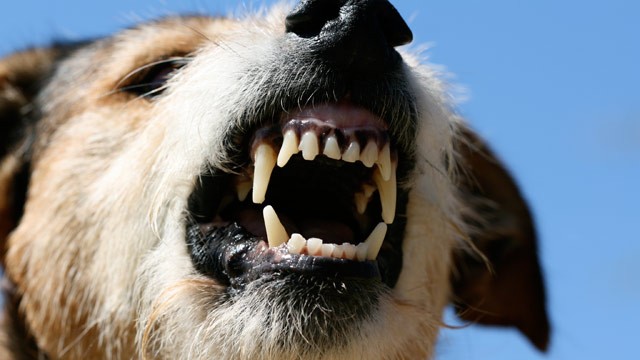Half a billion dollars, though, does not begin to quantify the harm done by bites from Fifi, Rex, Laverne, Princess, Laddie-Boy and Buster—in other words, from dogs in toto. Toto, too? Yes, even from Toto.
As a U.S. Postal Service slogan in support of National Dog Bite Prevention Week says, "There are 70 million good dogs, but…ANY DOG CAN BITE."
And whom do dogs most often bite? Toddlers. Next, the elderly; and coming in third--you guessed it--postal carriers.
"Dog bites are the ninth leading cause of unintentional nonfatal injury to children ages 5-9," Kathy Voigt, president of Prevent The Bite, tells ABC News. "More than 2 million children are bitten by dogs every year, and most bites are from their own dog or a dog they know well. The majority of bites to smaller children are in their face and head."

The Insurance Information Institute says the most expensive claims are ones involving young children disfigured by a bite: Your neighbor's child comes over to your house to play, is bitten, and needs reconstructive surgery. Though the number of bite claims has not changed much in the past 10 years, costs have risen because medical care costs more.
According to the American Society of Plastic Surgeons, there were close to 27,800 reconstructive procedures, including ones for children, to repair dog bites in 2012.
Most homeowners' policies, says the Institute, provide liability coverage of $100,000 to $300,000. If the claim exceeds the limit, the dog owner is responsible for all damages above that amount, including legal expenses.
Most insurance companies insure homeowners with dogs, according to the Institute. But some charge more to people owning breeds that an insurer may regard as bite-prone, such as pit bulls and Rottweilers. Some cover the owner only if the dog is taken to behavior classes or is restrained in public with a muzzle, chain or cage. Others deny coverage altogether.
Patterson of the AVMA calls insurers' singling out certain breeds misguided. The data, she says, do not bear out the contention that one breed is more apt to bite than another, though she allows that big dogs, by virtue of their size and strength, may do more damage when they bite. "A Great Dane, a retriever can do a pretty good job of biting, if they decide to." But if you look at "willingness to bite," she says, there's no evidence that pit bulls, for example, are more dangerous than Pekinese. "Communities with a lot of pit bull bites are communities with a lot of pit bulls."
Still, she says, her own apartment building does not allow tenants to keep breeds it deems especially dangerous, including pit bulls, Akitas and Rottweilers.
